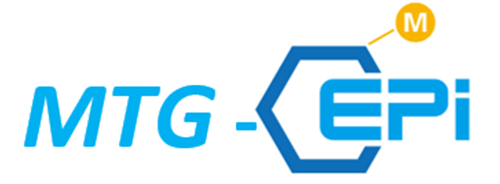Breast Cancer Awareness Month: Shining a Light on Early Detection
Introduction
Every year, countless lives are touched by breast cancer. The cornerstone of battling this formidable foe is early detection. Every October, the global community unites, donning pink ribbons to spotlight Breast Cancer Awareness Month and emphasize the critical importance of early detection.
In the U.S., one in eight women will face a breast cancer diagnosis. Globally, 2.3 million women receive this diagnosis annually, resulting in about 685,000 deaths, marking breast cancer as the most prevalent cancer worldwide. It’s a disease that knows no boundaries, affecting women across every country. Surprisingly, about half of all breast cancer cases manifest in women without any specific risk factors apart from their gender and age, emphasizing its unpredictable nature.
While these statistics are daunting, they highlight an undeniable truth: early detection is pivotal.
Dive in with us as we explore the limitations of current screening methods and the ground-breaking innovations on the horizon. Discover how these advancements could reshape the future of breast cancer detection. Keep reading to empower yourself with knowledge and hope.
The Traditional Screening Problem
Despite the challenges, mammography remains an essential tool in the fight against breast cancer, credited with countless early detections and improved outcomes. Yet, as effective as it is, traditional screening methods like mammography aren’t without their limitations:
- False-Negative Results: Mammograms can sometimes miss tumors, with research suggesting they might miss one in eight cancers, especially in women with dense breasts.
- False-Positive Results: Mammograms can sometimes indicate a cancer presence when there’s none, leading to undue stress and unnecessary procedures for patients.
- Self-examinations, while encouraged, have their efficacy debated among experts.
- Accessibility Barriers: Not all women globally can access regular mammography screenings due to socioeconomic, geographical, or cultural challenges.
Further challenges include:
- Overdiagnosis and Overtreatment: Differentiating between aggressive and dormant cancers remains a challenge, leading to potential overtreatment.
- Radiation Exposure: The cumulative effect of minimal radiation exposure from repeated mammograms becomes a concern.
Given these concerns with traditional methods, there’s a burgeoning interest in alternatives. One such promising innovation is the liquid biopsy approach.
The Liquid Biopsy Approach
A liquid biopsy is a cutting-edge technique that tests a sample of bodily fluid, typically blood, to identify cancer cells or DNA fragments from tumor cells. Offering a less invasive alternative to traditional biopsies, liquid biopsies extract tumor information via simple blood tests. Though a relatively recent development, it’s showing promise in delivering more accurate results, enhancing patient experience, and allowing more frequent monitoring.
The Promise of Liquid Biopsy
The groundbreaking work from labs like Professor Moshe Szyf’s at McGill University illuminates the potential of liquid biopsies. DNA methylation patterns—changes in the way DNA functions without altering its sequence—can serve as early indicators of diseases, including cancer. A 2018 study from Szyf’s team demonstrated that altered DNA methylation patterns in T-cells could serve as early detection markers for breast cancer progression. This research suggests the potential for non-invasive methods to monitor breast cancer using immune signatures.
One of the groundbreaking methods developed in the realm of liquid biopsy is the Binary Categorical Differentiation (BCD) Method. This innovative technique, pioneered by the scientists at HKG Epitherapeutics, arose from an extensive investigation of DNA methylation results from thousands of individuals, spanning normal tissues, blood, and cancer samples. The proprietary research led to the discovery of methylation profiles with stark differences between cancer, blood, and normal tissues. These findings culminated in the BCD Method, which identifies clear “black and white” distinctions between cancerous and normal samples.
Drawing parallels to the promising approach used for HCC detection, the EpiBreast marker by HKG Epitherapeutics employs a similar Binary Categorical Differentiation (BCD) method, aiming to redefine early breast cancer detection. This approach promises to reshape early detection through liquid biopsy, leveraging the unique insights provided by the BCD Method and honing in on the epigenetic DNA profile.
Concluding Remarks:
Advancements in breast cancer detection are making real progress. The innovations discussed here offer genuine hope for improved early detection and patient outcomes.
But progress requires support. We encourage readers to back this crucial research, whether through donations or simply by staying informed and sharing the knowledge. Your advocacy and involvement can make a difference.
Together, with your support, we can continue the momentum and make early breast cancer detection a reality for more women around the world.
References:
- Breast cancer (who.int)
- Breast Cancer Awareness Month 2023
- Parashar, S., Cheishvili, D., Mahmood, N., Arakelian, A., Tanvir, I., Khan, H. A., Kremer, R., Mihalcioiu, C., Szyf, M., & Rabbani, S. A. (2018). DNA methylation signatures of breast cancer in peripheral T-cells. BMC Cancer, 18(1), 574. https://doi.org/10.1186/s12885-018-4482-7
- Cheishvili, D., Wong, C., Karim, M. M., Kibria, M. G., Jahan, N., Das, P. C., Yousuf, M. A. K., Islam, M. A., Das, D. C., Noor-E-Alam, S. M., Szyf, M., Alam, S., Khan, W. A., & Mahtab, M. A. (2023). A high-throughput test enables specific detection of hepatocellular carcinoma. Nature Communications, 14, 3306. https://doi.org/10.1038/s41467-023-39055-7
Recent Blog Posts
-
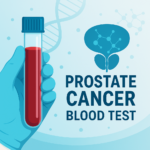 13 Jun 2025MTL Epitherapeutics and RI-MUHC Develop Early Prostate Cancer Blood Test
13 Jun 2025MTL Epitherapeutics and RI-MUHC Develop Early Prostate Cancer Blood Test -
 11 Jan 2025EpiAge Research Publication Signals a New Era in Understanding Biological Aging
11 Jan 2025EpiAge Research Publication Signals a New Era in Understanding Biological Aging -
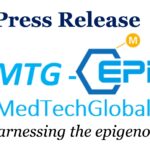 18 Nov 2024EpiMedtech Global Announces FDA Registration of EPIAGE, the First Epigenetic Age Test Registered by the FDA
18 Nov 2024EpiMedtech Global Announces FDA Registration of EPIAGE, the First Epigenetic Age Test Registered by the FDA -
 18 Nov 2024EpiMedTech Global Validates Unique epiCervix HPV Combo Test for Cervical Cancer Detection
18 Nov 2024EpiMedTech Global Validates Unique epiCervix HPV Combo Test for Cervical Cancer Detection -
 31 Oct 2024HKG epiTherapeutics’ MetaGen Genetic Risk Assessment Test Receives FDA Registration, Now Available in the U.S.
31 Oct 2024HKG epiTherapeutics’ MetaGen Genetic Risk Assessment Test Receives FDA Registration, Now Available in the U.S. -
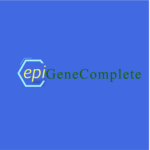 31 Oct 2024EpiMedTech Global Launches epiGeneComplete: A Breakthrough Genetic and Epigenetic Test for Comprehensive Health Diagnostics
31 Oct 2024EpiMedTech Global Launches epiGeneComplete: A Breakthrough Genetic and Epigenetic Test for Comprehensive Health Diagnostics -
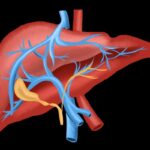 30 Oct 2024Enhanced Early Detection of Liver Cancer
30 Oct 2024Enhanced Early Detection of Liver Cancer -
 08 Oct 2024Are Microarrays Still Reliable? How Next-Generation Sequencing Outperforms Traditional Methods
08 Oct 2024Are Microarrays Still Reliable? How Next-Generation Sequencing Outperforms Traditional Methods
